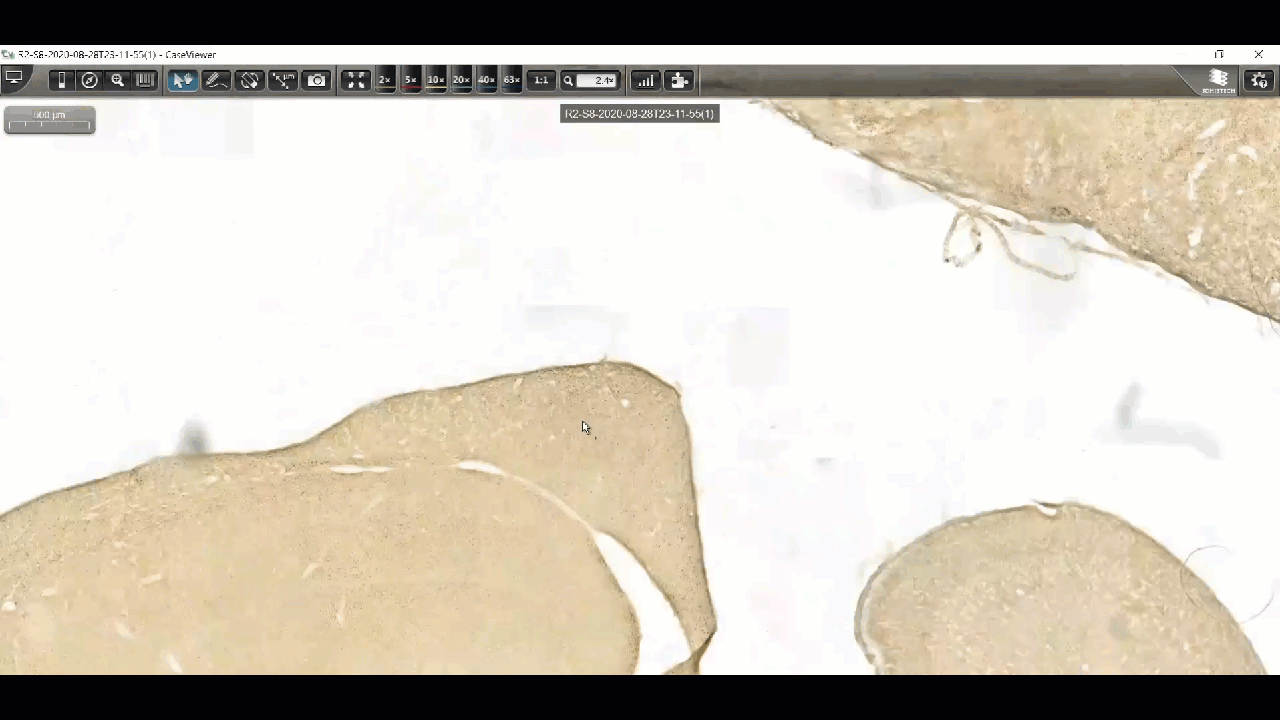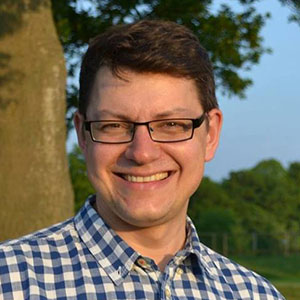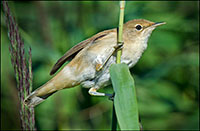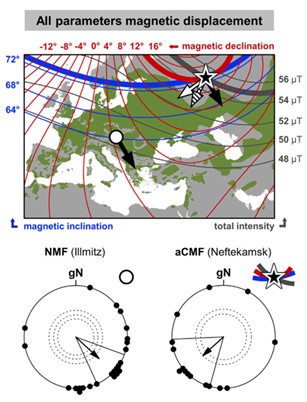Biography
Academic positions
- 2019- present: Lecturer (Animal Behaviour and Behavioural Neuroscience), Keele University, UK
- 2017-2019: Leverhulme Early Career Fellowship, Bangor University, UK
- 2016-2017: Postdoctoral Research Assistant, Bangor University, UK
- 2014-2016: Postdoctoral Research Assistant, Queen’s University Belfast, UK
- 2012-2014: Banting Postdoctoral Fellowship (NSERC), University of Guelph, Ontario, Canada
- 2011-2012: Postdoctoral Researcher, University of Oldenburg, Germany
- 2006-2011: PhD (Biology), University of Oldenburg, Germany
Curriculum vitae
Born and raised in Russia, in 2003 I graduated from the Ulyanovsk Pedagogical University with Diploma (Biology and Chemistry). During my undergraduate years in Ulyanovsk (1998-2003) and MSc in Biology studies (2003-2005) at the St. Petersburg State University (Russia), I started working with the Zoological Institute of Russian Academy of Sciences and significantly contributed to various research projects in the field of avian movement ecology and bird navigation under supervision of several academic staff of the Biological station Rybachy, a branch of the Zoological Institute of Russian Academy of Sciences. The Biological Station Rybachy is a remarkable research institution being the descendant of the world’s first bird observatory ‘Vogelwarte Rossitten’ (German: ‘Bird Observatory Rossitten’). It was established in 1901 on the south-eastern coast of the Baltic Sea which is a hot spot for bird migration in Europe. It is and one of the leading centres studying bird migration. In 2005, I obtained a MSc in Biology from St. Petersburg University.
During my post-graduate study, I started a series of research projects on bird navigation addressing the question of how birds navigate and what sensory mechanisms they use for finding a geographic position. More specifically, I delivered several experimental studies focused on the ability of migratory Eurasian reed warblers, Acrocephalus scirpaceus, typical European migratory songbirds, to find their way across 100’s and 1,000’s km and reach their migratory destinations even when displaced to unfamiliar territories (this ability is called True Navigation). In the past 20 years, myself with the international team of collaborators have done a long series of experimental studies using reed warblers to address the questions of what the senses birds require for finding their position relative to the destination, what sensory principles they use for that etc. The main findings: 1) at least some birds indeed use the Earth’s magnetic field for navigation (position finding; Kishkinev et al. 2015 Curr Biol; Kishkinev, Packmor et al. 2021 Curr Biol); 2) bird’s magnetic navigation depends on the trigeminal nerve (the 5th pair of cranial nerves in vertebrates) because the integrity of the nerve seems to be crucial for navigation in reed warblers and perhaps some other avian species (Kishkinev et al. 2013 PLoS One).
In 2006-2011, I earned a PhD in Biology working in Animal Navigation Lab, University of Oldenburg, Germany. This group is led by Prof Henrik Mouritsen and a renowned team in the field of animal navigation and animal magnetoreception. For my PhD project I used a range of field- and laboratory-based studies focusing on different aspects of bird navigation and magnetosensory mechanisms including displacement experiments (translocation of migratory birds between regions), birds’ orientation tests in round arenas (so-called Emlen funnels), operant conditioning, brain activity mapping using neuronal activity markers and various magnetic instrumentation.
During my postdoctoral years (2011-2019), I delivered a series of research projects examining the role of magnetic and olfactory senses for bird navigation working in Canada (Banting Postdoctoral Fellowship funded by NSERC at the Norris Lab, University of Guelph, Ontario, 2012-14).
Since 2014 I have been working in the UK initially as a Postdoctoral Research Assistant funded by the Leverhulme Research Project grant led by Prof Richard Holland (former Queen’s University Belfast, now Bangor University). During these years, I was actively engaged in several research projects mainly based overseas. In Austria (Biological station Illmitz), I did experiments to test the current hypotheses explaining how reed warblers can use the Earth’s magnetic field for navigation. In Russia, I used light-level geolocators to track songbirds’ migratory pathways and the impact of blood parasites on migratory performance in songbirds (Emmenegger et al.,2020). In 2017-2019, I led research on the two projects. My Leverhulme Early Career Fellowship (2017-2020; initially based in Bangor finishing up in Keele) titled “The disturbing effect of electromagnetic fields on the avian magnetic compass sense” aimed to further study a recently discovered disturbing effect of anthropogenic electromagnetic fields on the avian magnetic compass sense.
In 2017-2019, I also led a team of overseas academics delivering the grant funded by Russian Science Foundation (project titled “Sensory systems for short and long-distance navigation in birds”). This project addressed several questions including how migratory songbirds can use magnetic and olfactory senses for finding their geographic position relative to destinations (Kishkinev et al. 2020), whether the use of these two senses depends on geographic scale (short- vs long-distance navigational mechanisms) and where magnetosensensory cells (aka magnetoreceptors) could be located in the animal's body.
I joined Keele University as a Lecturer in Animal Behaviour and Behavioural Neuroscience in November 2019.
Personal pages
Research and scholarship
Main research areas
- Animal orientation and navigation.
- Bird and insect migration.
- Animal’s magnetic sense.
- Biotelemetry and computer vision methods to quantify movement and body postures of animals.
- Movement ecology and rehabilitation practices of European hedgehogs (Erinaceus europaeus).
- Measuring impact of renewable energy sites on animals.
Current research projects
The sensory mechanisms of animal orientation and navigation
Together with an international team of collaborators from Germany, Russia, Austria (KLIIV, Biological Station Illmitz) and the UK (Bangor, Oxford, St Andrews), we do field experiments and computer modelling to better understand how different animals such as migratory birds and Lepidoptera (butterflies and moths) can find direction and geographic location using natural cues (for ex., the Earth’s magnetic field, the sun, stars, odours and others). We utilise various sensory manipulations to examine current hypotheses explaining how these animals can orient and navigate using astronomical, magnetic, visual and olfactory cues to reach their targets moving across short and long distances (from just a few to 1000’s of km).
|
|
Behavioural tests in a magnetic coil setup |
|
|
Eurasian reed warbler, a typical long-distance songbird migrant often used to study bird navigation. |
|
|
Figure from Kishkinev, Packmor et al. 2021 Curr Biol showing the experimental evidence of bird magnetic navigation abilities. Eurasian reed warblers oriented in round arenas in the seasonally (autumn migration) appropriate south-eastern direction (the left circular diagram) at the capture site in Austria (the white dot on the map) but re-oriented when were magnetically displaced to the displacement site outside their species range (the black dot on the map and the right circular diagram). |
Genetic control of bird migration phenology
The seasonal migration of birds has fascinated biologists for centuries. Despite extensive research on this natural phenomenon, the specific mechanism that controls the timing (phenology) of migration remains enigmatic. Because first-year birds from numerous species can migrate independently of their adult conspecifics, social cues alone are unlikely to explain the phenology of their migratory decisions. Experimental studies have shown that in some bird species, migratory phenology is largely under genetic control. Although several candidate genes have been investigated, the specific genes involved and their interactions remain poorly understood. Understanding the genetic control of bird migration is critical for predicting and responding to the rapid phenological changes resulting from climate change. Currently, we examine associations between genotypes linked to certain candidate genes with annual events such as arrivals or departures from/to wintering grounds/breeding sites in certain European migratory songbird species (e.g, Great reed warblers, Acrocephalus arundinaceus). This is a collaborative project with Dr. Petr Procházka (Institute of Vertebrate Biology, Czech Rep.) and The Fitak Lab (Uni of Central Florida).
Neurosensory substrates of the animal's magnetic sense
Magnetic sense in the avian brain
To better understand how the avian magnetic sense works we need to trace down the location of avian magnetosensitive cells in the avian brain. This is required to reveal the parts of the brain where there is a correlation between magnetic stimulation and neuronal activity. Finding and characterizing such regions will help us examine the current hypotheses explaining how birds can sense magnetic fields (e.g., whether this sense resides in specialized cells in the trigeminal nerve endings, in the retina of the eye or in the vestibular system as different hypotheses explaining the avian magnetic sense suggest). This project is supported by Biological Station Rybachy and The Malkemper Group (Max Plank Institute).

Above: Counting active neurons in the avian brain (gif)
New models to better understand the animal's magnetic sense
Historically, the main model organisms for magnetic sense studies have been birds which are often difficult models when we want to reveal the details of how magnetoreception works. We strive to establish new, understudied but potentially powerful animal models. For example, we are developing new approaches in this field using European migratory Lepidoptera (butterflies and moths). A range of genetic, molecular and brain imaging techniques exist in insects to manipulate with genes, perform inexpensive behavioural tests and observe the nervous system in action. We therefore aim to establish behavioural approaches to clearly demonstrate that these species can respond to a changing magnetic field. This will open new possibilities for tracing the location of the magnetic sense within the body and investigating this sense in more detail using techniques not available in birds.
Development and application of biotelemetry and computer vision systems to quantify animals' movements and body postures
Using deep neural networks to establish a novel non-invasive and sensitive motor skill assessment tool for pre-clinical mouse models of muscle-wasting conditions
We use DeepLabCut (an efficient method for 2D and 3D markerless pose estimation based on transfer learning with deep neural networks) as well as some other deep learning and machine learning approaches to better quantify and assess muscle-wasting conditions in mouse models (e.g., for spinal muscular atrophy). This is a collaboration with Dr Melissa Bowerman and Dr Nadia Kanwal (both are Keele University).
Above: A mouse exploring an experimental arena. Its body parts are automatically labelled by DeepLabCut. The body posture data are used to quantify motor skills vs different factors such as the age, the muscle-wasting conditions etc.
Development and application of novel biotelemetry methods for animal movement surveys
We use novel methods and technological approaches to study movements of different animals and address research questions previously inaccessible for researchers.
We use automated radio tracking being inspired by Motus – an international collaborative research network that uses coordinated automated radio telemetry to facilitate research and education on the ecology and conservation of migratory animals (birds, bats, insects etc). Motus is a program of Birds Canada in partnership with collaborating researchers and organisations. Motus is a network of automated receiving units (ARUs or Motus towers) which are radio receiving set-ups including autonomous (powered by solar panels) equipment kits deployed in the field for months and years. The towers receive radio signals from locally moving animals by antennas, digitise and process the signals on the flight using small and inexpensive single-board computers (such as Raspberry Pi) and then relay a data to the server via a wireless link. The Motus towers can be remotely controlled and reconfigured and data can be accessed by the researcher at any points of the globe. The towers can form networks covering small to large areas and be programmed to scan movements of animals 24/7 – a laborious task previously infeasible for human field assistants. Very small radio tags (sometimes a small fraction of 1 g) can be attached on free-ranging animals including large insects. We aim to develop Motus in Europe (UK and beyond) and popularise and support the usage of automated high throughput radio telemetry for animal movement ecology.
![]()
Above: Automated radio-tracking unit
Movement ecology and rehabilitation practices of European hedgehogs (Erinaceus europaeus)
Together with the researchers from Nottingham Trent University (Professor Dawn Scott, Dr Antonio Uzal Fernandez and Kate Davies, a PhD candidate), we study the rehabilitation practices of European Hedgehogs in the UK and Europe (surveys with hedgehog rehabilitators) and hedgehogs’ post release behaviour in the UK. Find out more about this research project.

Above: European hedgehog (by BangorArt, CC BY-NC-ND-2.0)
BIOGAIN: Managing Solar Sites for Biodiversity Gain
I am a part of a large BIOGAIN team (Keele: School of Geography, Geology and the Environment and Life Sciences; external partners from Loughborough University) which together works at The Low Carbon Energy Generation park (LCEG) on the Keele University campus. LCEG provides an excellent opportunity to explore the biodiversity and soil health impacts of a solar farm, allowing data to be collected from the first year of construction and operation, something that is lacking from existing studies. This site is of particular interest because of the unusual combination of solar and wind generation, which were applied for under two separate planning applications and therefore with two separate environmental impact assessments and sets of mitigation measures.
What we do:
- Monitoring of biodiversity and soil health parameters at LCEG.
- Generation of a database and processes for future data collection.
- A stakeholder engagement event to explore biodiversity and solar farm research and practice.
My contribution to the project is mainly around the management of bird surveys and (to a lesser extent) support of small mammals surveys. The future plan is to develop and field test a system of radio tracking for surveying insect pollinators (e.g., bumblebees) at and around LCEG site.
You can read more about BIOGAIN project and watch this short video about LCEG.
Teaching
Module lead
|
LSC-20091 |
Animal Behaviour |
|
LSC-30066 |
Tropical Biology Field Course (Malaysia Field Course) |
Contribution to other modules
Undergraduate modules
|
LSC-10081 |
Animal Biology |
|
LSC-10083 |
Ecology and Plant Biology |
|
LSC-10085 |
Fundamentals of Biology |
|
LSC-10053 |
Understanding Animal Behaviour (module is discontinued) |
|
LSC-10087 |
Core Practical Skills |
|
LSC-10070 |
Clinical Applications of Biomedical Science I |
|
LSC-20097 |
Environmental Biology (UK-based field course) |
|
LSC-20062 |
Living Together (module is discontinued) |
|
LSC-20071 |
Animal Adaptations |
|
LSC-20099 |
Animal Health and Nutrition |
|
LSC-20076 |
Learning and Memory |
|
LSC-20107 |
Practical Skills in Biosciences |
|
LSC-20078 |
Neuroscience Research Methods |
|
LSC-20089 |
Clinical Applications of Biomedical Science II |
|
NAT-20001 & NAT-30004 |
Research Skills for Natural Scientists and Nat Sci Interdisciplinary Project. |
|
LSC-30042 |
Current Research Topics in Neuroscience |
|
LSC-30028 |
Advances in Medicine |
|
LSC-30045 |
Double Experimental Project (with research skills assessment) |
|
LSC-30050 |
Life Sciences Dissertation |
Postgraduate modules |
|
|
MSc Cognition and Cognitive Neuroscience modules (Schools of Psychology and Life Sciences) |
|
|
PSY-40039 |
Advanced Research Skills and Design (discontinued) |
|
PSY-40075 |
Advances Study in Cognition and Cognitive Neuroscience (discontinued) |
|
PSY-40097 |
Topics in Cognition and Cognitive Neuroscience |
|
LSC-40059 |
MSC Biomedical Science (Blood Science), PgT student project supervision. |
Publications
Publications before 2013
- Kishkinev, D, Mora, CV & Mouritsen, H (2012) An attempt to develop an operant conditioning paradigm to test for magnetic discrimination behaviour in a migratory songbird. Journal of Ornithology 153, 1165-1177. (DOI: 10.1007/s10336-012-0847-x).
- Chernetsov, N, Kishkinev, D, Kosarev, V & Bolshakov, CV (2011) Not all songbirds calibrate their magnetic compass from twilight cues: a telemetry study. Journal of Experimental Biology 214, 2540-2543. (DOI: 10.1242/jeb.057729). Joint first author
- Hein, CM, Engels, S, Kishkinev, D & Mouritsen, H (2011) Robins have a magnetic compass in both eyes. Nature 471, E11. (DOI: 10.1038/nature09875).
- Kishkinev, D, Chernetsov, N & Mouritsen, H (2010) A double clock or jetlag mechanism is unlikely to be involved in detection of east-west displacements in a long-distance avian migrant. Auk 127, 773-780. (DOI: http://dx.doi.org/10.1525/auk.2010.10032).
- Zapka, M, Heyers, D, Hein, CM, Engels, S, Schneider, N-L, Hans, J, Weiler S, Dreyer D, Kishkinev, D, Wild, M & Mouritsen, H (2009) Visual, but not trigeminal, mediation of magnetic compass information in a migratory bird. Nature 461, 1274-1277. (DOI: 10.1038/nature08528).
- Bulyuk, V, Mukhin, A, Kishkinev, D & Kosarev, V (2009) To what extent do environmental factors affect the long-distance nocturnal post-fledging movements of the Reed Warbler? Journal of Ornithology 150, 339-350. (DOI: 10.1007/s10336-008-0352-4).
- Chernetsov, N, Kishkinev, D & Mouritsen, H (2008) A long-distance avian migrant compensates for longitudinal displacement during spring migration. Current Biology 18, 188-190. (DOI: http://dx.doi.org/10.1016/j.cub.2008.01.018). Joint first author
- Mukhin, A, Chernetsov, N & Kishkinev, D (2008) Acoustic information as a distant cue for habitat recognition by nocturnally migrating passerines. Behavioral Ecology 19, 716-723. (DOI: 10.1093/beheco/arn025).
- Chernetsov, N, Kishkinev, D, Gashkov, S, Kosarev, S & Bolshakov C (2008) Orientation programme of first-year pied flycatchers Ficedula hypoleuca from Siberia implies an innate detour around Central Asia. Animal Behavior 75, 539-545. (DOI: 10.1016/j.anbehav.2007.05.019).
- Kishkinev, DA, Chernetsov, NS & Bolshakov, CV (2006) Migratory orientation of juvenile Pied Flycatchers (Ficedula hypoleuca L.) from the Eastern Baltic. Ornithologia 33, 153-160.
- Kishkinev, DA (2006) Current trends in study of avian orientation and navigation. Russian Journal of Zoology 85, 342-368.
- Mukhin, AL, Chernetsov, NS & Kishkinev, DA (2005) Song of Reed Warbler Acrocephalus scirpaceus (Aves, Sylviidae) as an acoustic marker of wetland habitat during migration. Russian Journal of Zoology 84, 995-1003.
- Bulyuk VN, Mukhin, A, Fedorov, VA, Tsvey, A & Kishkinev D (2000) Juvenile dispersal in Reed Warblers (Acrocephalus scirpaceus) at night. Avian Ecology and Behaviour 5, 45-61.
Students and postdocs
Current students
Kate Davies
Kate is an early-career researcher and a PhD candidate (ex-Keele in 2020-2022, now at Nottingham Trent University working with Prof Dawn Scott, Dr Antonio Uzal Fernandez) studying the rehabilitation practices of European hedgehogs and their spatial behaviour after return to the wild. She combines surveys with hedgehog rehabilitators and fieldwork with GPS/radio biotelemetry to investigate the rehabilitation practices across the hedgehog natural range (UK and Europe) and the post-release behaviour of juveniles that have been overwintered in care in the UK. You can find more about this project here.
Gia Hepburn
Gia earned a MSc in Biomedical Sciences at Keele in 2022 when she joined our interdisciplinary team with 3 PIs across the three schools of Keele University (Life Sciences - Dr Dmitry Kishkinev, Medicine - Dr Melissa Bowerman, and Computer Sciences and Mathematics – Dr Nadia Kanwal). She significantly contributed to a project aiming to develop a novel approach for motor skill assessments of pre-clinical mouse models of motor-wasting conditions such as spinal muscular atrophy using computer vision and deep learning tools.
Currently as a technical assistant (co-supervised with Dr Simon Trent), Gia continues her work with our cross-departmental team mentioned and contributes to our research programme funded by a Muscular Dystrophy UK (MDUK) grant. Gia also won a prestigious 2-month internship for The DeepLabCut AI Residency Program running in 2023 at EPFL (Switzerland) - a program empowering next-gen leaders in behavioural analysis, enhancing data analysis skills and providing great networking opportunities.
I also train and co-supervise Ms. Özge Çetin, a PhD candidate doing her research at The Bowerman Lab at Keele University. Özge is currently conducting research on identifying appropriate drug candidate via bioinformatic analysis and lab-based techniques to confirm therapeutics that can target muscle and metabolism defects in spinal muscular atrophy (SMA). Together with me, she is learning how to apply computer vision and deep learning approaches to quantify locomotor and behavioural features of SMA mice across their lifespan which ultimately helps us better understand subtle changes in behaviours of pre-clinical mouse models of motor-wasting conditions.
Previous supervision
I have been supervising students and early-career researchers since 2007 being in various roles, research teams and countries. To name a few: 5 undergraduate (UGs) and 1 post-graduate (PGRs) students at St Petersburg State University, Russia (2007-2010). Two UGs and 2 PGRs at University of Oldenburg, Germany (2009-2012). 1 PGR at University of Guelph, Canada (2012-2014). 4 UGs and 1 PGR at Bangor University (2017-2019). In 2017-2019, I led a team of researchers (2 senior researchers, 2 postdocs, 3 PhD students, 3 technical assistants) based at the Zoological Institute of Russian Academy of Sciences. We were funded by a Russian Science Foundation grant to do study the sensory systems underlying short- and long-distance navigation in birds.
Want to join my team at Keele?
My research team is constantly looking for bright students wishing to undertake research training. It could be a research project for a Masters-level programme, a MPhil and/or PhD degree in Biology or Neuroscience.
Research keywords: animal behaviour, animal migration, movement ecology, biotelemetry, computer vision, sensory ecology, behavioural neuroscience, animal magnetoreception.
Interested students can contact me directly at d.kishkinev@keele.ac.uk to discuss potential projects, financing and application procedures.
Early-career and more senior researchers (holding PhD or equivalent) are welcome to get in touch with me as well to discuss potential collaboration. We may discuss pilot studies, writing a joint grant application or even joining our running/oncoming grant(s) as a Post-Doctoral Research Assistant (named PDRA in the UK). You can even be a more independent researcher hosted in my lab as a Visiting Researcher (short-term) or a Research Fellow (let me know if interested and we discuss specific funding schemes). If interested please get in touch using the email to discuss concrete projects and proposals, and I will do my best to find research funding bodies, funding schemes, and other sources of financing and support tailored to your project and needs.
My main research themes and projects are described on the “Research and Scholarship” tab but it does not list everything I am interested in and doing. If you have your own ideas and proposals or are keen to join my team but do not see an exact project suiting your needs, there is room for discussion of alternative projects.
School of Life Sciences,
Huxley Building,
Keele University,
Staffordshire,
ST5 5BG
Tel: +44 (0) 1782 734414
Enquiries:
Tel: +44 (0) 1782 734414
Email: lifesciences.office@keele.ac.uk





